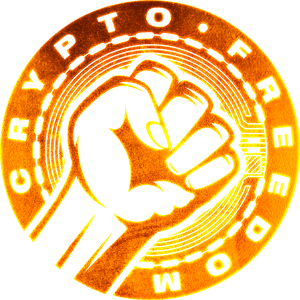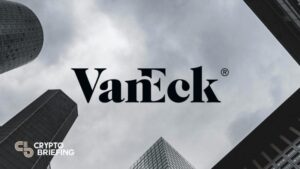Defining a Concept & Developing a New Paradigm

_____
_____
Web3 is as much a concept of what crypto and blockchain should be used for, as it is a discrete sub-sector of crypto.”There will be exponential growth in community opportunities, broadening the demographics that these sub-sectors reach.””The organizations pursuing Web3 projects will still continue to be venture capital as a whole.””Content creators will continue to be the pioneers of Web3.”
Web3 is the logical consequence of crypto. In a world where digital currencies and blockchain networks have allowed for the decentralization of money and financial services, it was all but inevitable that the decentralization of the Web would follow.
But while the concept of Web3 certainly took much of the technology sector by storm in 2021, it hasn’t developed into a fully-fledged sector, defined by concrete examples of platforms, products, and services making a substantial difference to our lives. However, numerous industry figures say that it will experience considerable growth in 2022, with an expanding number of startups, organizations, and companies creating valuable products that help to popularize it.
However, commenters also affirm that, rather than being a distinct, standalone area of the crypto sector, Web3 is more of a paradigm for the sector as a whole, a way of conceptualizing the development of crypto as it integrates a variety of different strands. This includes NFTs, DeFi, and the metaverse, which will all combine to ensure that Web3 has a very strong year indeed.
Web3! Yes, but what is it?
“‘Web3’ seems to be the buzzword taking over ‘crypto’ in 2022, but we believe it’s just a different way to describe the industry; and the market is currently moving towards an era of interoperability where NFTs, digital assets, and various token types all live harmoniously,” said Nick Mancini, research analyst at crypto sentiment analytics platform Trade The Chain.
Mancini isn’t the only person who holds the view that Web3 is as much a concept of what crypto and blockchain should be used for, as it is a discrete sub-sector of crypto. A similar stance is taken by Adam Soffer, Livepeer (LPT)’s product developer and the founder of the Web3 Index, who says that it’s “more of a mindset” related to governance and ownership than a defined set of technologies.
“There are aligned incentives so that users of the service, tool, platform, or protocol reap rewards and benefits from the contributions they make. That’s ownership. And then the user community also has a say in how the service, tool, platform, or protocol is developed. That’s governance,” he told Cryptonews.com.
For Soffer, one trend involving Web3 this year will relate to the community clarifying what exactly it means, and what it doesn’t. In his opinion, there’s currently a little too much confusion surrounding the concept, with too many people assuming it refers to completely decentralized authority.
“But that’s not necessarily what’s meant nor how humans tend to structure work. So while there can be decentralization, it’s not necessarily required for a project to be fully decentralized to be Web3,” he said, adding that it’s arguably impossible for any project to be fully decentralized.
For Jonathan Victor, the co-lead at NFT Storage, as well as the business development lead at Protocol Labs, Web3 — along with NFTs, DeFi and the metaverse — are different aspects of the same thing.
“Really we’re talking about different layers of the tech stack. NFTs, DAOs, the metaverse — all of these trends imply a credibly neutral base layer,” he told Cryptonews.com.
Billions for ‘every idea that has merit’
Assuming that Web3 is essentially inextricable from crypto as a whole (or at least from various parts of it), commentators agree that it will witness considerable growth this year.
“Last year was momentous for Web3 and its derivatives, and I expect this trend to continue throughout 2022. With the industry reaching portentous heights, there will be exponential growth in community opportunities, broadening the demographics that these sub-sectors reach,” said Solo Ceesay, Chief Operating Officer and Co-founder of decentralized social marketplace Calaxy.
Ceesay adds that NFTs and the metaverse, as a subset of Web3, will gain traction with less sophisticated and crypto-literate audiences more than other elements of Web3. This is largely because they can be interwoven into both the social and physical experiences offered by content creators, brands, and more.
“DeFi and the growth of DAOs will give hardcore crypto users the necessary forums to unite and collectively overcome the challenges individuals often face in the traditional world of finance,” he said.
Other commentators suggest that we won’t see any particular area of crypto (or the wider economy) hone in on Web3 until people gain a firmer sense of what the latter is all about.
“The organizations pursuing Web3 projects will still continue to be venture capital as a whole, and we will see more corporate VC arms step into the landscape. It is not apparent that any one sector or organization fully knows what to do with the ‘metaverse’ and ‘Web3’ landscape yet, so you will continue to see billions pour in to fund every idea that has merit,” said Nick Mancini.
That said, Mancini does suggest that at least a couple of sectors will be particularly drawn towards a Web3 philosophy and/or organizational approach: “gaming and trade finance, which are two industries that have been on a growth trajectory for the past few decades.”
Given that Web3 is often about decentralization power and governance over a platform or application to its community, other industry players also suspect that Web3 will be a big draw for community-driven brands and companies with a culture of innovation and creativity.
“Brands that maintain strong connections to their customers — and in fact see them as the community that they serve — are the ones that will see outsized results from Web3 projects,” said Adam Soffer, adding that Web3 isn’t suited to platforms that rely on ‘winner takes all’ economics or that act as middlemen between businesses and customers.
As far Solo Ceesay is concerned, content creators will be leading the development and growth of Web3, for various reasons. This means writers, artists, musicians, filmmakers, and other creatives.
“Content creators will continue to be the pioneers of Web3, given the discourse that has been transpiring within those communities, such as that the ideas of ownership and monetization are some of the biggest issues influencers currently face. Web3 technology presents a solution by allowing for a more direct, efficient transfer of value between fans and content creators — a far cry from the chokehold that centralized parties have over this value transfer in Web2,” he said.
In continuity with content creation, social media — in which we all create shared content — will be another area ripe for Web3, according to Steve Liu, CEO of BitTorrent (BTT).
“The next hot contest area for Web 3.0 would include the highly lucrative social media segment, where it becomes increasingly dominated by a handful of centralized platforms. This is where NFT, the crypto version of popular meme trend, and crypto-engine metaverse novelty thrive to solidify the mass adoption of Web 3.0,” he told Cryptonews.com.
Web3 infrastructure
While numerous sectors are estimated to gravitate towards yet to be defined Web3, one of the key aspects of its growth this year should be the development of the decentralized infrastructure that enables its ideals to be realized. This means protocols that provide the basic building blocks for decentralized Web3 applications.
Adam Soffer reports that the Web3 Index, which he founded, is especially interested in network (aka ‘work’) protocols that provide Web3’s infrastructure layer, since these are the “foundation” of the new paradigm.
“After all, how truly Web3 can we be when we’re building everything on Web2 applications and tools owned by centralized Big Tech gatekeepers? At some point, we need to fully break free,” he said.
For example, he points to protocols such as Arweave (AR), Arkash, Helium (HNT), the Graph (GRT), Pocket, and Sia (SC) as standing at the leading edge of Web3 infrastructure. In other words, such protocols will be ones to watch if Web3 is to grow this year.
As he says, “What’s interesting here is that these protocols are helping facilitate the interoperable infrastructure that enables all kinds of new innovations in Web3 — and even supporting Web2 projects as well.”____Learn more: – Blockchain Games in 2022: Play-to-Earn, Gamification, Interoperability and Major Publishers – DEX Trends in 2022: Greater Market Share, New Products, Familiar Challenges
– Layer 2 in 2022: Get Ready for Rollups, Bridges, New Apps, Life With Ethereum 2.0, and Layer 3 – What’s in Store for DAOs in 2022?
– Crypto Tax Trends in 2022: Increased Reporting, Updated Rules, and a Wealth Tax Debate- Metaverse Trends in 2022: Prepare for More Gaming and New Virtual Experiences with NFTs
– Bitcoin & Crypto Mining in 2022: New Locations, Technologies, and Bigger Players- CBDCs in 2022: New Trials and Competition with Crypto
– NFTs in 2022: From Word of the Year to Mainstream Adoption & New Use Cases- Bitcoin and Ethereum Price Predictions for 2022
– Crypto Adoption in 2022: What to Expect? – 2022 Crypto Regulation Trends: Focus on DeFi, Stablecoins, NFTs, and More
– DeFi Trends in 2022: Growing Interest, Regulation & New Roles for DAOs, DEXes, NFTs, and Gaming- Crypto Security in 2022: Prepare for More DeFi Hacks, Exchange Outages, and Noob Mistakes
– How Global Economy Might Affect Bitcoin, Ethereum, and Crypto in 2022- Crypto Exchanges in 2022: More Services, More Compliance, and Competition
– Crypto Investment Trends in 2022: Brace for More Institutions and Meme Manias
Find more predictions for 2022 here.
















